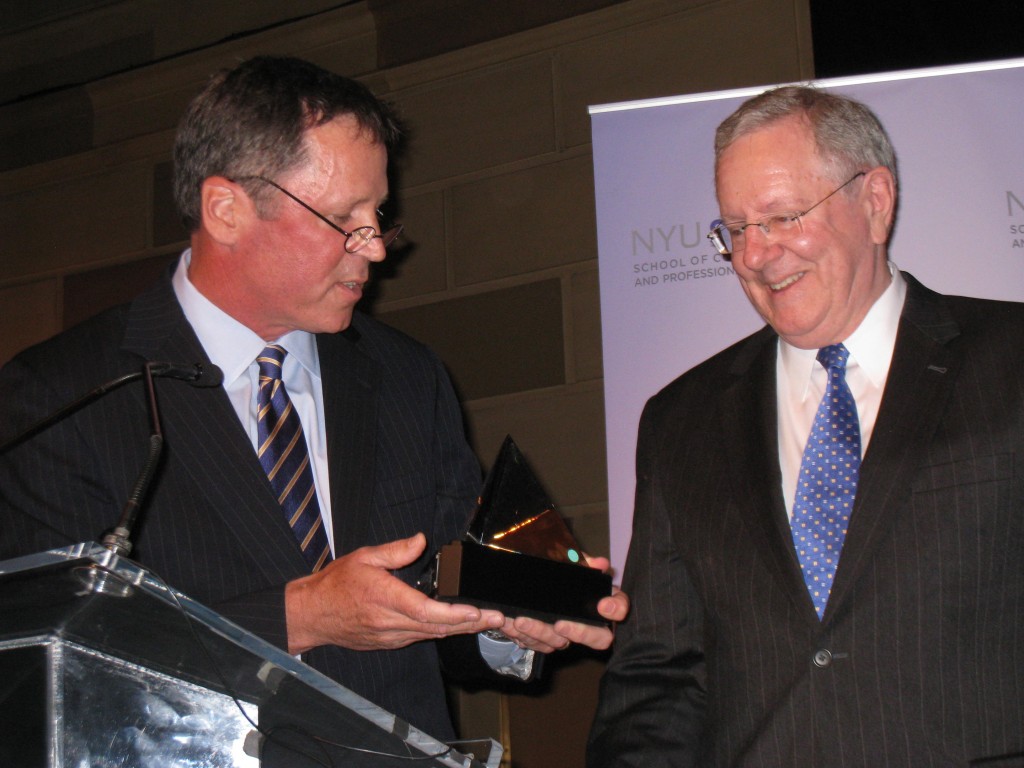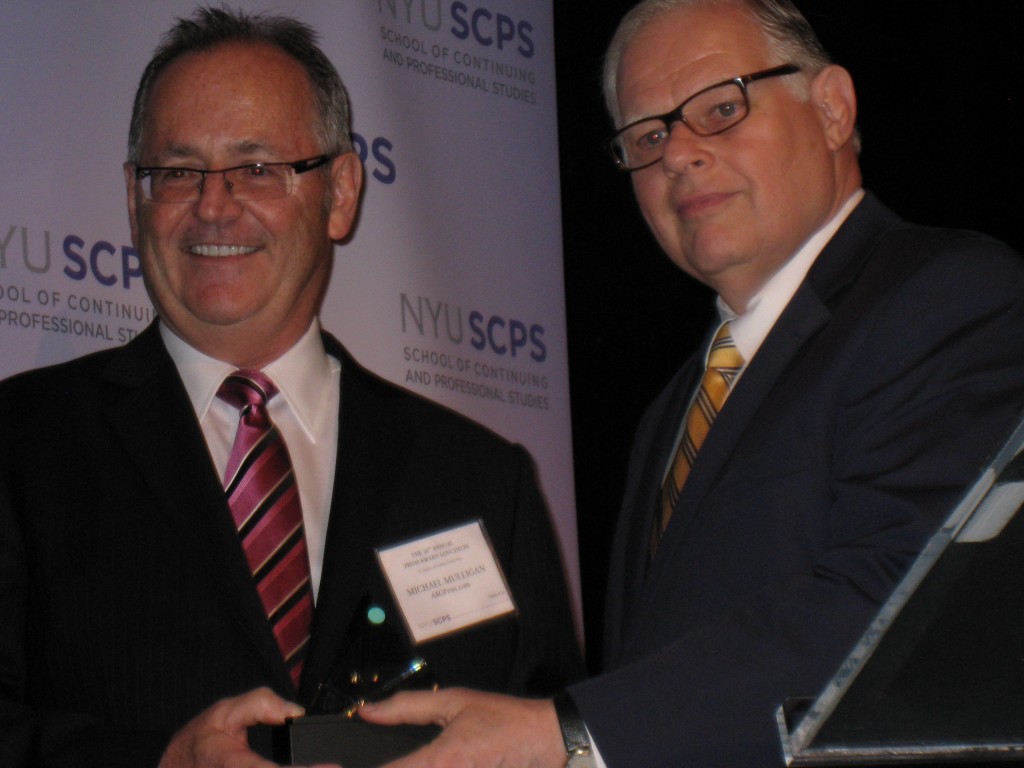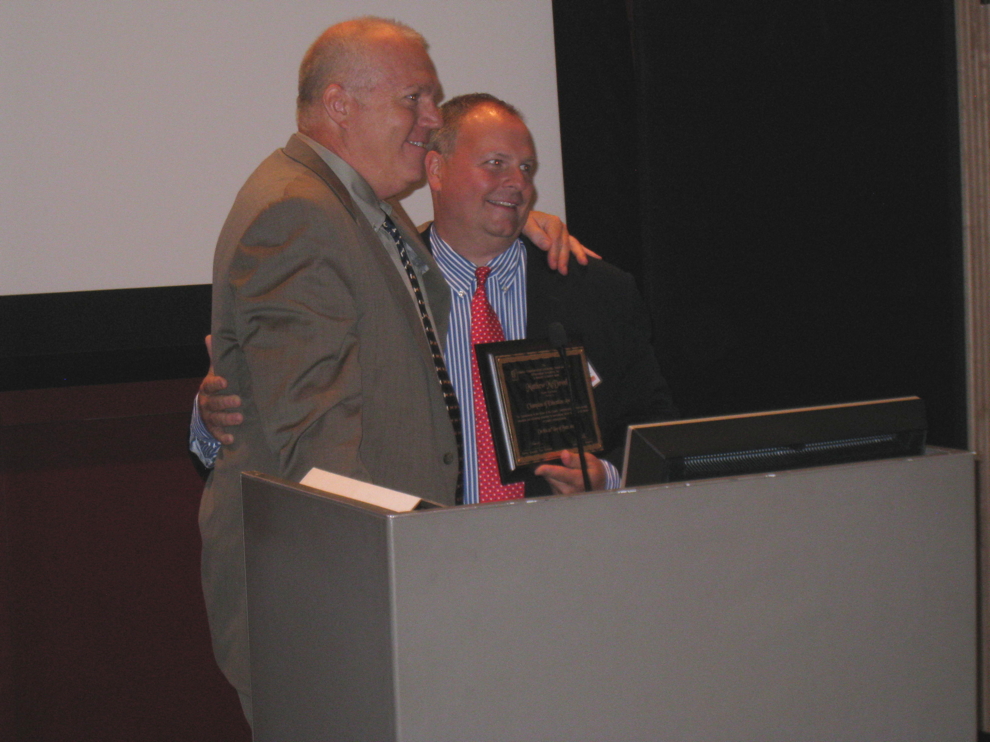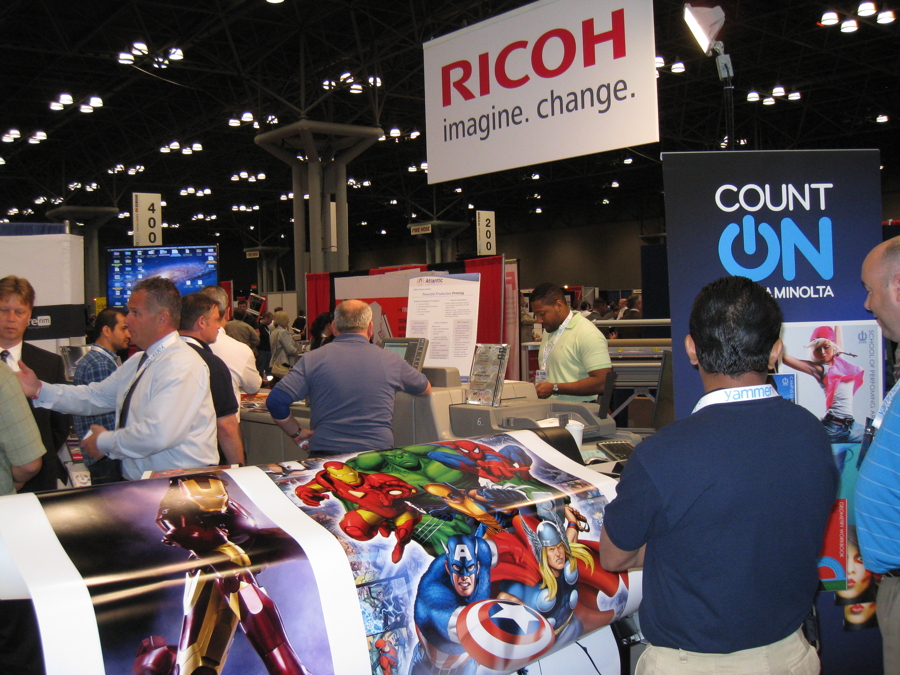 Steve Forbes (right), chairman and editor-in-chief, Forbes Media LLC, accepts the Prism Award from Mike Federle, COO, Forbes Media LLC.
Steve Forbes (right), chairman and editor-in-chief, Forbes Media LLC, accepts the Prism Award from Mike Federle, COO, Forbes Media LLC.
The graphic communications industry continues to struggle with declining sales, squeezed profit margins, restricted access to capital, and business pressures of every imaginable kind. But, none of that has dampened the enthusiasm of those who support the Prism Awards, a high-profile achievement recognition program that rings with optimism every year under the auspices of New York University’s School of Continuing and Professional Studies (SCPS).
On June 21, the event marked its 26th anniversary with a record turnout and another record for revenue generated on behalf of the M.A. program in Graphic Communications Management and Technology at SCPS. A large part of the draw was the presence of this year’s Prism Award recipient: Steve Forbes, chairman and editor-in-chief, Forbes Media LLC. The ceremony, which took place at Gotham Hall near Herald Square, also featured the presentation of an Alumni Achievement Award to Michael J. Mulligan and a Student Achievement Award to Eunic M. Ortiz.
The Prism Award has been given annually since 1986 in recognition of distinguished leadership in the graphic communications media industry. The Prism Award luncheon is the industry’s longest-running and most successful educational fundraising event, having collected millions of dollars for graphics studies since its inception.
This year’s ceremony was emceed by M.A. program advisory board co-chairs Martin J. Maloney (Broadford & Maloney) and Kathy B. Presto (Williams Lea North America). Prism Award committee chairs were Francis A. McMahon (Océ North America) and Laura C. Reid (Hearst Magazines).
All proceeds from the $750-per-seat event fund scholarships for students enrolled in the M.A. program in Graphic Communications Management and Technology, which has been in existence since 1981. Every year since then, many high-ranking industry executives have served on the M.A. program’s advisory board as curriculum consultants and as providers of internships and career guidance. The program, managed by academic director Bonnie Blake and assistant director Ansley Dunn, also enlists industry professionals as adjunct lecturers.
Enrolled in the cross-disciplinary program are working professionals as well as full-time students, including a significant number of international participants. Topics of study include executive leadership, entrepreneurial thinking, finance, global marketing, managing the media mix, and graphic communication technologies.
 Michael J. Mulligan (left), recipient of the Alumni Achievement Award, with Martin J. Maloney, co-chair of the advisory board for the NYU-SCPS M.A. program in Graphic Communications Management and Technology.
Michael J. Mulligan (left), recipient of the Alumni Achievement Award, with Martin J. Maloney, co-chair of the advisory board for the NYU-SCPS M.A. program in Graphic Communications Management and Technology.
Mulligan, the Alumni Achievement Award recipient, credited the program with helping him to reimagine the mission of Advanced Business Group Inc. (ABG), a New York City digital printing company he founded in 1992. Billing itself as the city’s leading digital print provider for business, ABG offers a full range of quick-turnaround production solutions and marketing support services. Mulligan said that attaining an M.A. in the program led him to rethink his role as the CEO of the company that he started and continues to transform.
Accepting the Student Achievement Award, Ortiz described herself as “the epitome of the digital consumer.” Professionally, she is a senior account executive at Fleishman-Hillard, where she develops online, digital, video, and social media campaigns for clients in corporate, government, and technology- related industries. She also has served as a Web, digital, and social media manager for the New York City Council.
 Maloney congratulates Eunic M. Ortiz on her receipt of the Student Achievement Award.
Maloney congratulates Eunic M. Ortiz on her receipt of the Student Achievement Award.
Ortiz said that what she wanted in graduate studies “was a program where I could not only learn another level of leadership and management skills, but a program that would be up to date on the work I was involved in daily. I needed a program that could keep up with me.”
“The experience I’ve had while in the Graphic Communications Management and Technology program has exceeded my every expectation,” she declared.
Among the media properties managed by Steve Forbes are the namesake bi-weekly magazine, with a circulation of more than 900,000; the RealClear group of Web sites, including RealClearPolitics.com, which together with Forbes.com are said to reach 33 million readers every month; and 21 local-language licensee editions of Forbes publications for readers around the world.
The Prism Award recipient also has written or co-authored four books and was, in 1996 and 2000, a campaigner for the Republican presidential nomination.
Forbes told the Prism Award audience that while there are few “playbooks” to guide people in their career and life choices, a good education can help everyone to cope with the inevitable uncertainties ahead.
“The true source of wealth in an economy is people’s minds,” Forbes said, adding that the ingenuity of educated people is what gives value to oil, microchips, and other commodities prized by business and society.
He advised the students in the audience to accept the fact that at some point, “a crisis will hit you” during the pursuit of entrepreneurial ambitions. When it hits, he told them, the question to ask is, “What is the purpose of communications? What are you trying to achieve?” With the help of a big-picture focus, Forbes said, “you’ll have a little more serenity—just a little more—in terms of going forward.”
Still an advocate of the political and social changes he called for during his quests for the Republican presidential nomination, Forbes briefly addressed the subject of health care and its future after the Supreme Court’s pending decision on the national health care plan put forth by the Obama administration. According to Forbes, the controversy surrounding the health care debate misses the point.
“Why is the demand for health care seen as a crisis, and not as an enormous opportunity for entrepreneurs?” he asked. “How in the world do we get the patients in charge again, like the consumer is in charge of everything else?” Permitting the purchase of health insurance coverage across state lines would be one way of spurring entrepreneurial competition and “turning scarcity into abundance” in the health care marketplace, Forbes said.











